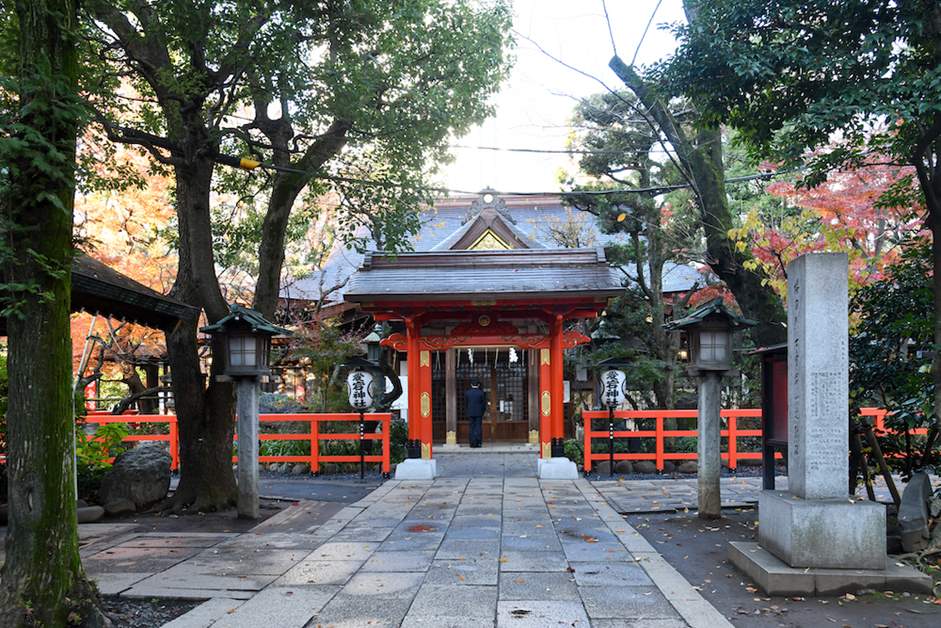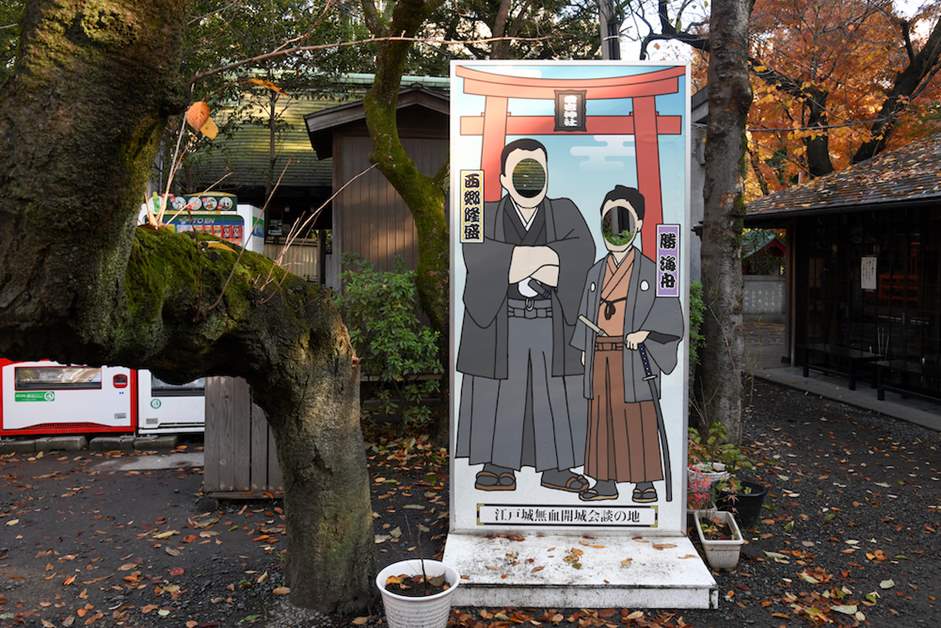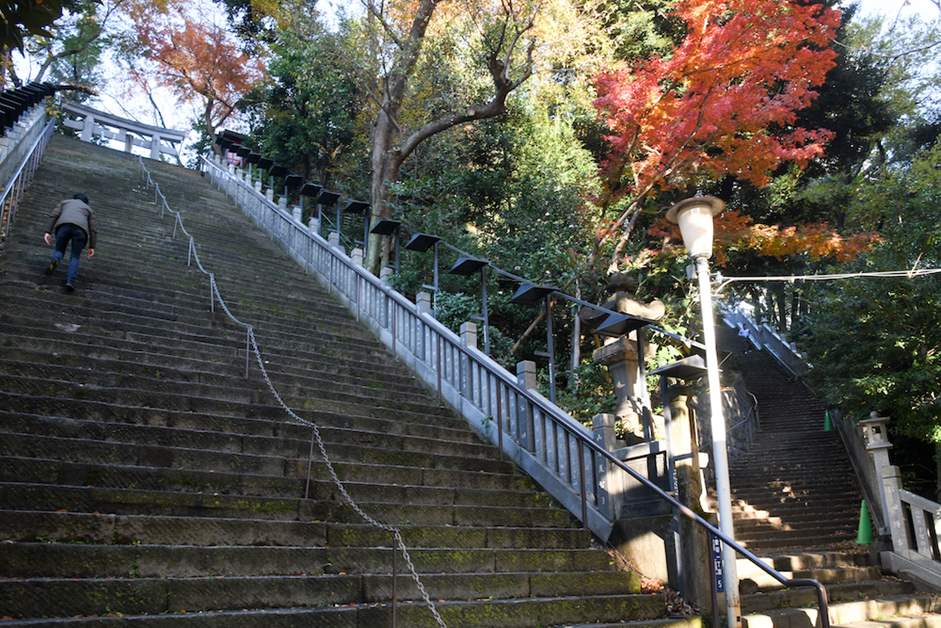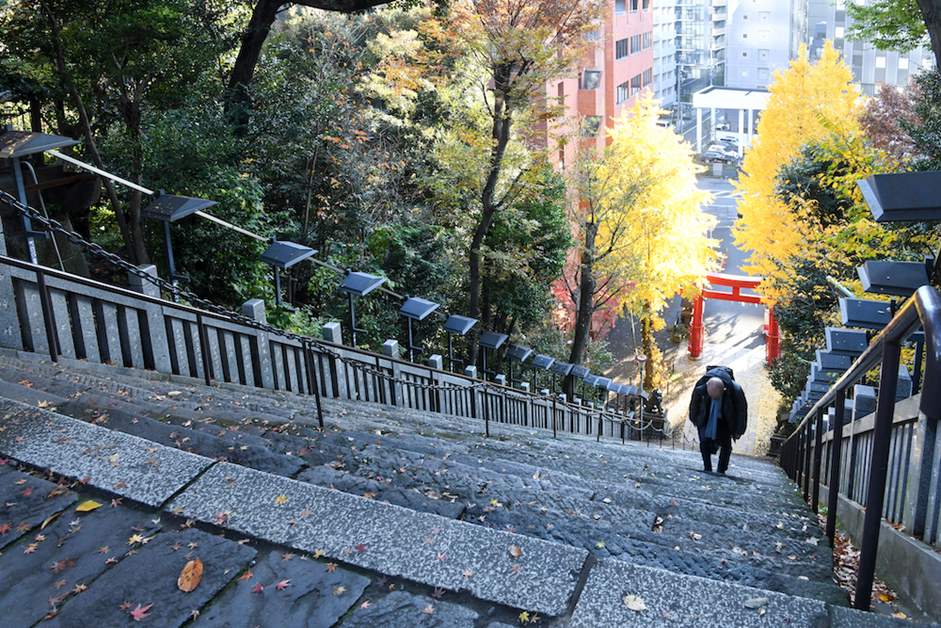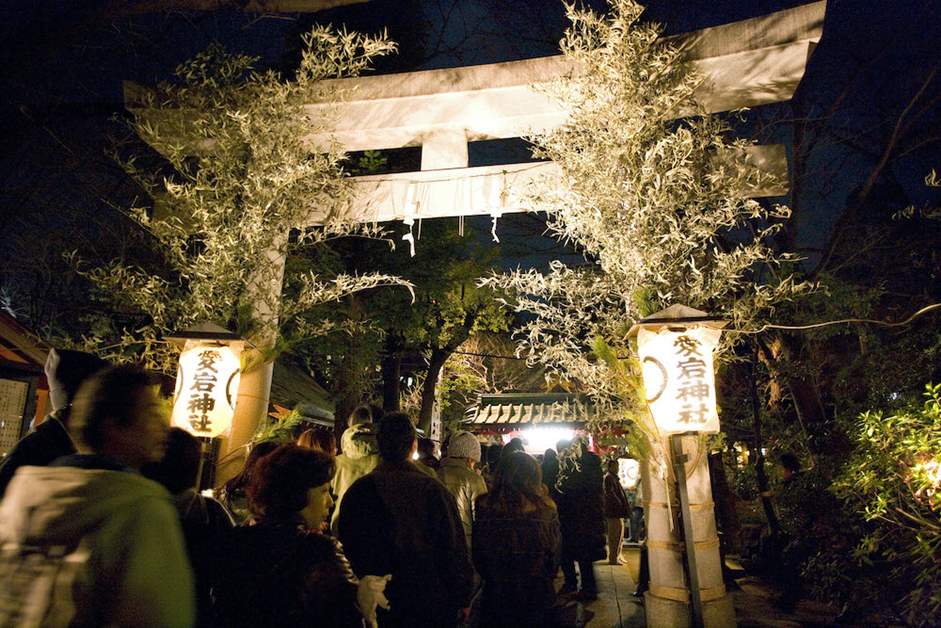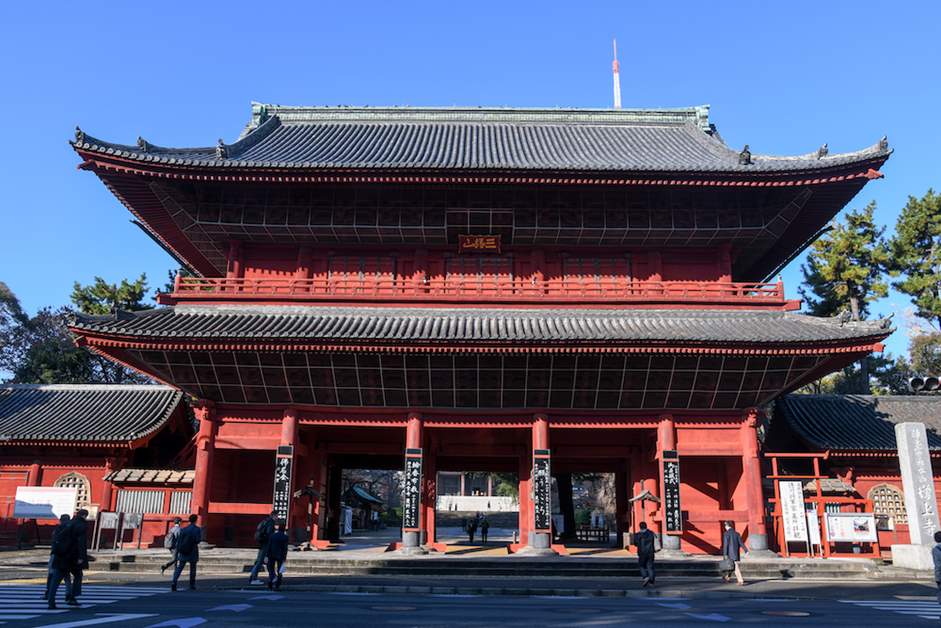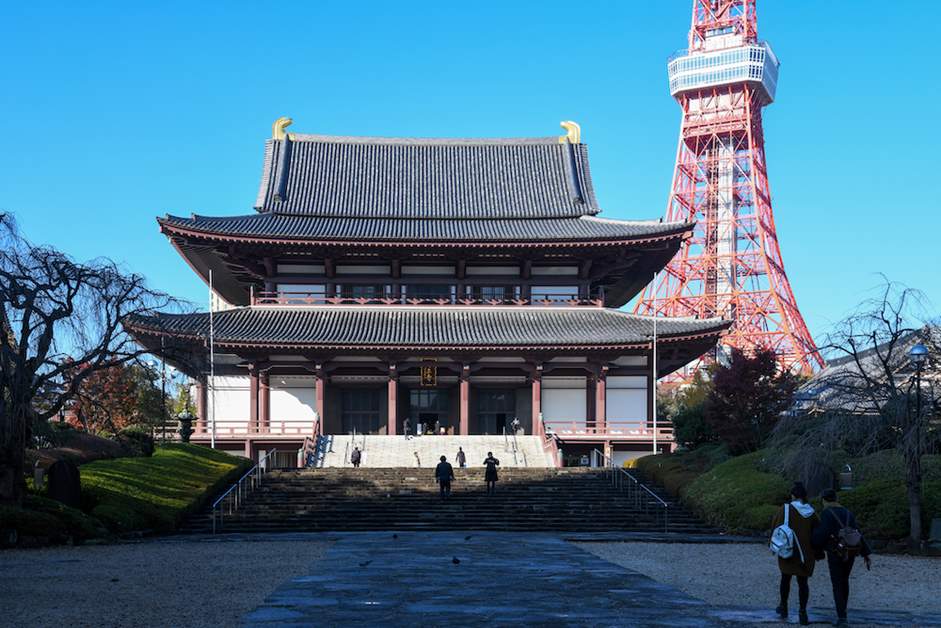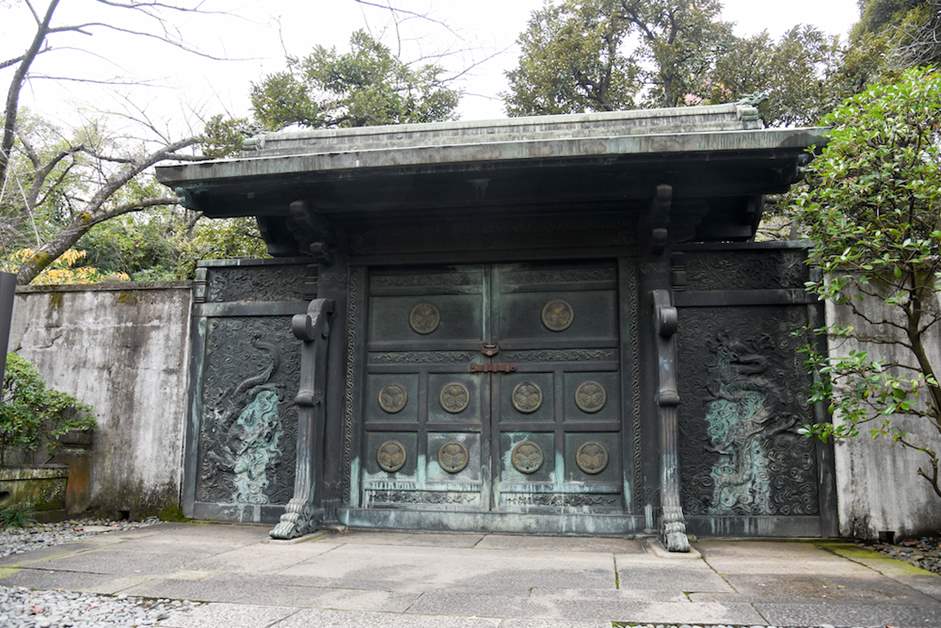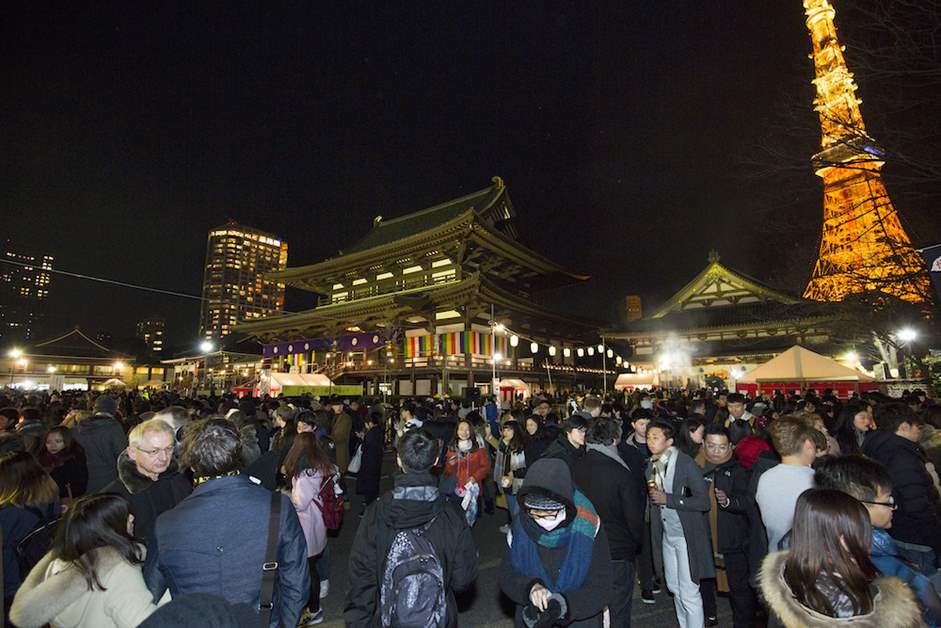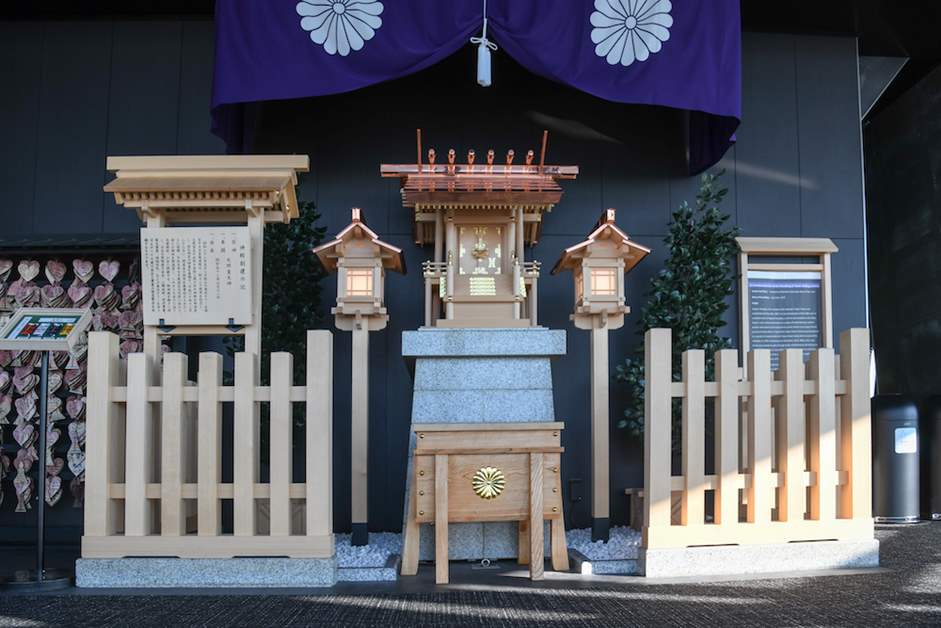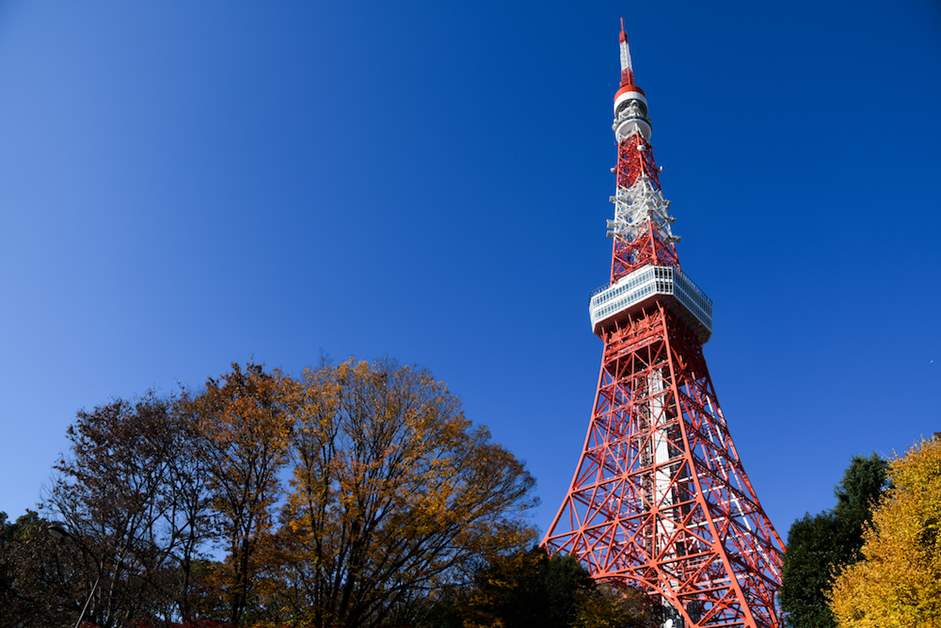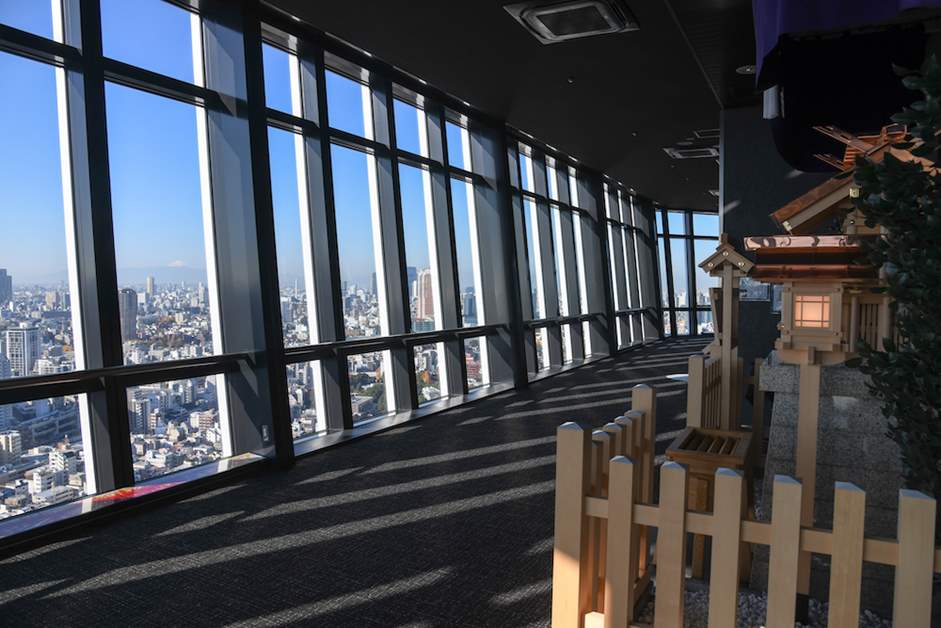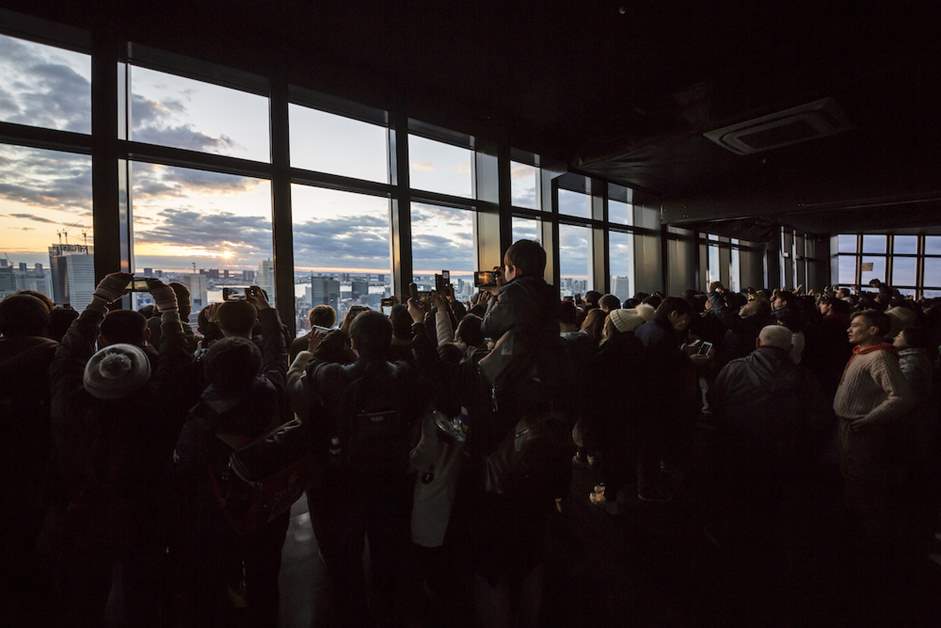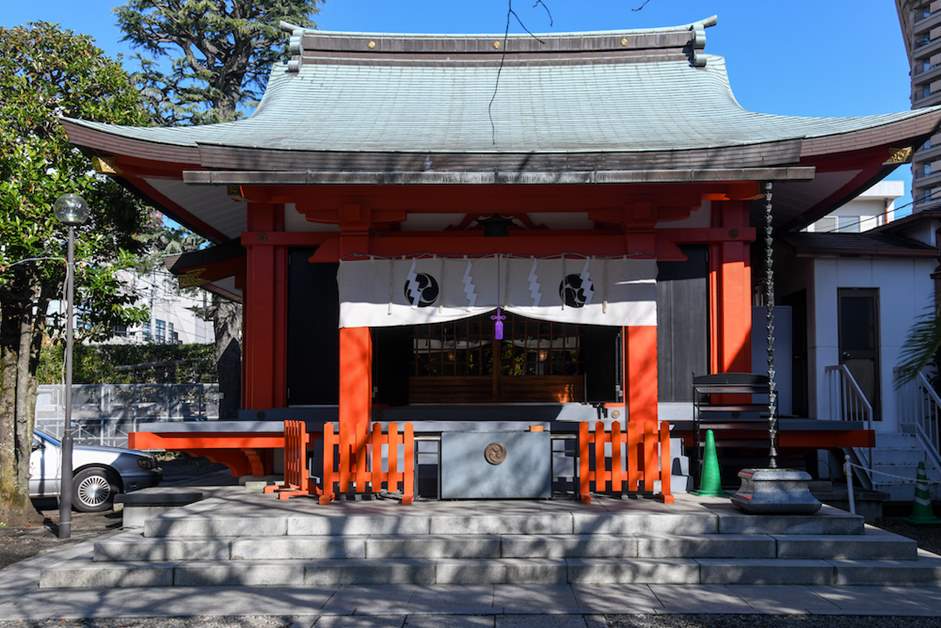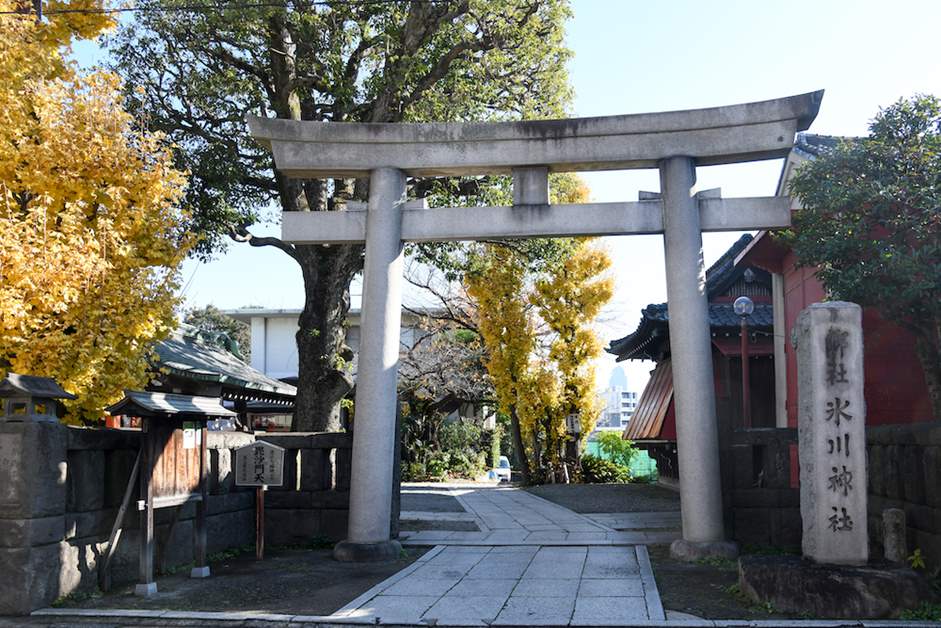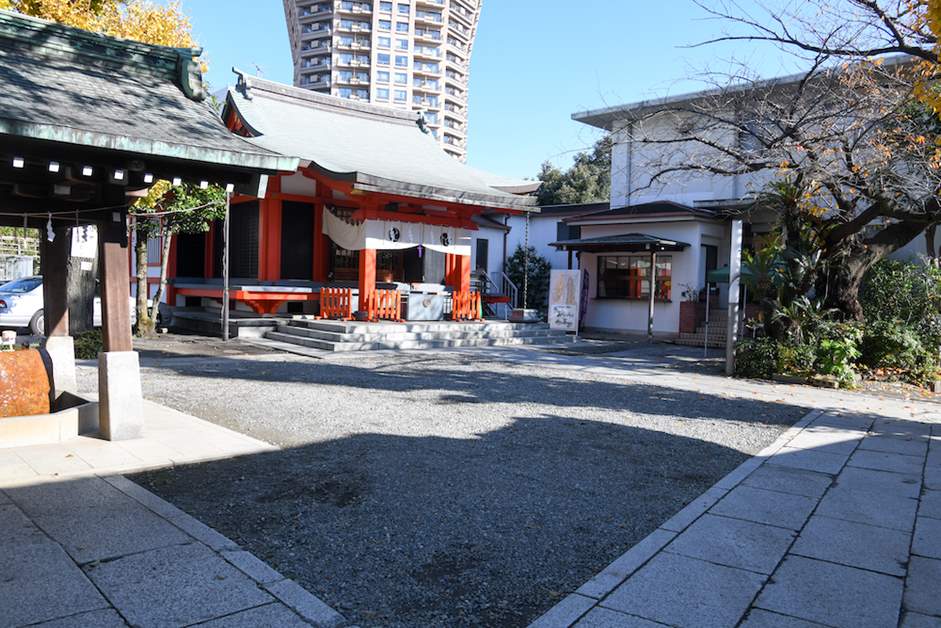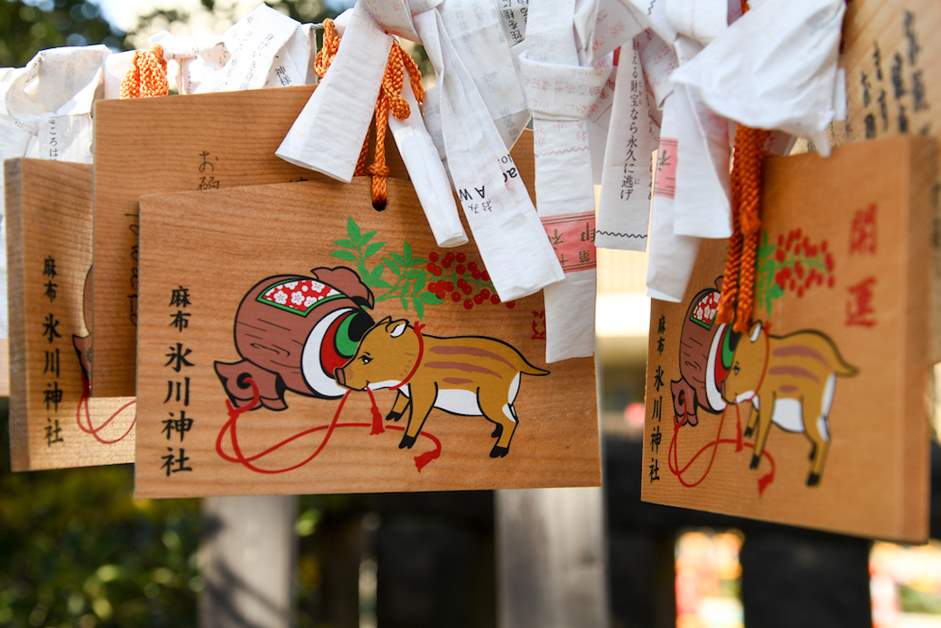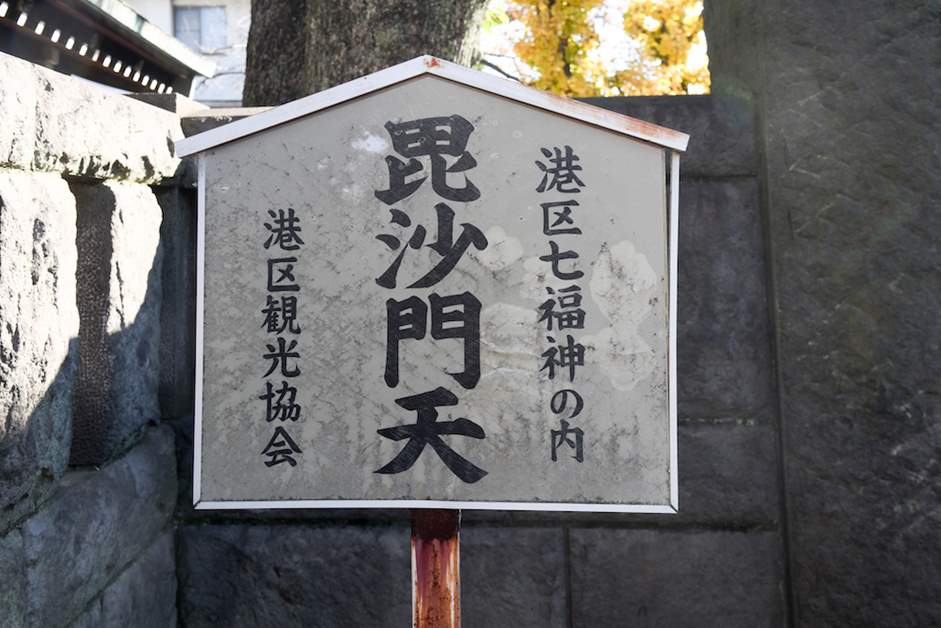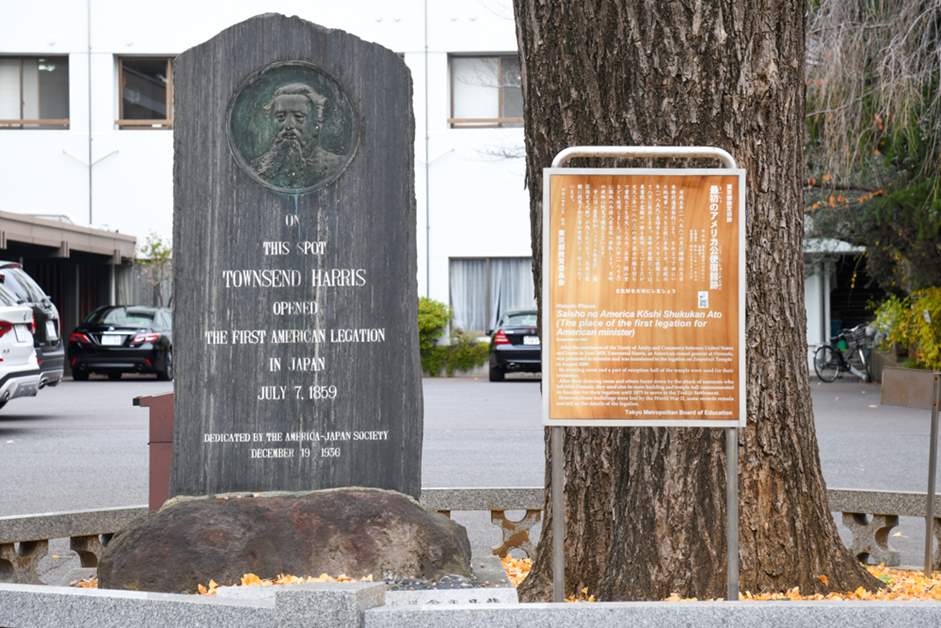Pray for good luck in the New Year at a fun new year's visit spot for a history walk! Special feature on shrines, temples and power spots in Minato-ku, Tokyo
Japanese New Year's Day is a year's prayer for safety and peace by visiting shrines and temples at the new year's visit. Of course, there are many good luck spots in Minato-ku, Tokyo that you should visit at the new year's visit. Tokyo Minato-ku, once the gateway to Edo on the Tokaido, is dotted with shrines and temples that have become important stages of history. There is no doubt that the luck improvement is due to the auspiciousness of each spot, such as The Tokugawa family's family temple, Zojoji Temple, and Atago Shrine, where there are legendary stone steps of success!?︎ It is also good to start collecting the recent boom of goshuin in the wake of the new year's visit. Let's start the year with a new mood at a shrine and temples in Minato-ku!
Atago Shrine "Stone steps of success" legend remains, important stage at the end of Edo and the end of the Edo period
Atago Shrine was founded in 1603 under the order of Tokugawa Ieyasu. It is enshrined on the summit of Mt. Atago, the highest mountain in Tokyo, 25.7 meters above sea level, and it is said that it once overlooked tokyo bay and the Boso Peninsula from the summit.
Ieyasu, who decided to open the Edo shogunate, built a shrine here where fire spirit life (Homusubi Mikoto), who controls fire, was enshrined in this area, and carefully protected it as a guardian deity for disaster prevention in Edo. The first shrine, Niomon, and Sakashita Somon were donated by the shogunate in 1610 (Keicho 15), and although they are not usually open to the public, "Katsugun Jizo Bodhisattva" owned by Prince Ieyasu is also enshrined. The shrine, which has been rebuilt every three times in disasters, including the Great Kanto Earthquake, was built in 1958. For more than 400 years, it has attracted faith from the common people of Edo.
Atago Shrine became an important one-page stage of history during the end of the Tokugawa shogunate and the Restoration. In front of the "Change Outside Sakurada Gate" in 1860 (Ansei 7), Mito Nanji prayed here before attacking Dairo Ando Ii. In 1868, Saigo Takamori, who was a staff member of the new government army, and Kaishu Katsu, who was a prominent figure in the former Shogunate army, visited here during discussions toward the "Bloodless Opening of Edo Castle" and talked about the future of Japan while looking over the city of Edo from the top of the mountain.
The steep slope just after passing through the Otorii Gate is a male slope also known as the "Stone Steps of Success". The so-called is associated with the affair of heikuro Magaki, an equestrian in the early Edo period. In 1631, on the way back from Zojoji Temple, the third shogun, Iemitsu- Ko, who looked up at Mt. Atago, ordered his vassals to find a plum blooming at the top of the mountain and pick it up on horseback. However, no one was going to climb the slope too steep, and Iemitsu's mood was gradually diagonally .... Heikuro Kappaki appeared there. Heikuro, who ran a horse, ran up the slope without hesitation and presented the plum branch to Iemitsu. Heikuro, praised by Iemitsu for his bravery as "Japan's no. 1 equestrian master", quickly roared his name into the world. Even now, many people come here to get ahead of Heikuro's success, and especially early in the morning, you can see many businessmen who will be using this as a commuting route.
When I climb the 86 stone steps, I feel a steeper slope than when I was looking up. If you climb to a certain height and look behind, you will even feel the feeling of your feet slying due to the steepness. There is a woman's slope with a loose slope next to otokozaka, so if you are not confident in your leg strength, we recommend that you climb here without overdoing it.
When you climb the stone steps of success, you will go through the majestic Torii Gate, cleanse yourself in the hand water house, pass through the shrine of tan-nuri, and visit the shrine. In the precincts, there are also beckonstones that you can learn good luck when you stroke, and shogun plums with Hirakuro folding branches, and the space arranged with ponds and greenery makes you feel the atmosphere of an oasis in the city.
During the Year-end and New Year holidays, the New Year's Eve is held from 11:45 p.m., and the Year's Day Festival is held from 8:00 a.m. on New Year's Day. At the Year's Day Festival, we pray for the safety of the new year, national security, and a rich harvest. On the 7th, the Shichigusa Fire Cooking Festival is held every year.
Zojoji Temple, a family temple of the Tokugawa Shogunate family
Zojoji Temple, a family temple of the Tokugawa family that attracts more than 1 million worshipers a year
Zojoji Temple is located on the approach to Daimon, about a 10-minute walk from the north exit ticket gate of JR Hamamatsucho Station. Needless to say, it is a family temple of the Tokugawa Shogunate family, and it is a large temple visited by more than 1 million people a year.
The large red gate at the end of the approach is the Sanye-de-Mon Gate, built in 1622 (Genwa 8). The 21-meter-high historical building, built with the support of Tokugawa Ieyasu, is the only building that retains the image of the time when Zojoji was built in the early Edo period, and has been designated as an Important Cultural Property of Japan. Sanre-de-Gate is a gate that eescipitats three worldly desires: "Devouring, ikari, and neglect.". In the upper part, the statues of The Three Buddhas and the 16 Rakan statues are ennaged.
Zojo-ji Temple was founded in 1393 (Meitoku 4) during the Muromachi period from the present-day Hirakawa-cho, Chiyoda-ku to the vicinity of Kojimachi. From there, the scale was expanded with the protection of Mr. Chiba and Mr. Satake, who were a wealthy family in the Kanto region. In 1590, Ieyasu, who entered Edo, formed a teacher-dan relationship with his chief priest, Minamoto Kou-ious, and became a family temple of the Tokugawa family in the Kanto region. After that, with the expansion of Edo Castle, it was moved to its present place, and it developed into a large temple after a large construction in 1605 (Keicho 10 years). It is one of the seven main temples of the Jodo sect and has continued to be an important temple not only for the Shogunate but also for the common people.
Zojo-ji Temple in the Edo period had more than 120 halls and more than 100 school dormitories. After war damage, the scale has changed greatly, but if you step into the precincts from the three-way exit gate, you should be surprised at its vastness. The vast precincts are dotted around the main hall where amida nyorai statues are enshrined, and there are a library built by the three major warehouses donated by Ieyasu, a bell tower hall with a bell that is counted as one of the three famous bells of Edo, Jiunkaku, an ankokuden hall, etc. By the way, it is said that the distance and number of stairs of the approach from Daimon to the main hall are set based on the world of "Enrian Gokudo Kingu Jodo " (Onriedo Gongjodo = the meaning of leaving this world with a lot of suffering and petitioning for the paradise pure land)" that Ieyasu used as a banner.
Behind the main hall, there is a graveyard of the Tokugawa Shogunate. Here, in addition to six shoguns, including hidetada the second generation, The Temple of Sugenin (Oe), the regular room of the second shogun, Hidetada, and The Wagu, who married from the Imperial Family to the Shogunate family as a symbol of the public interest union during the turbulent period at the end of the Edo period, are sleeping here.
On New Year's Eve, a jobonkai is held from 11:00 a.m. and old ammulets and bills are held after burning. After that, the Great Temple Bell, which once resounded in 70% of the entire Edo period, rang the bell of the new year and conveyed the arrival of the New Year.
On New Year's Day, many worshipers fill the vast precincts, and in the main hall, a correction meeting is held to pray for the peace of the year. In the precincts of this season when street stalls also open, a more lively sight is born than usual.
Tower Daijingu Shrine, the highest shrine in the 23 wards, located 150m high
To commemorate the 20th anniversary of the opening of Tokyo Tower in 1977, Tower Daijingu Shrine was built to wish for the safety and health of visitors. Located on the second floor of the main deck of Tokyo Tower, the shrine has been popular with visitors to Tokyo Tower for more than 40 years. This year, a new shrine has just been built in conjunction with the major renovation of the observatory.
Don't be a shrine in a tourist attraction. Tower Daijingu, which invited Amaterasu-kugami from Ise Jingu Shrine, the god of Japan, to the deity of AmaterasuSume Okami, is famous as a power spot. It is said that it is a shrine in tokyo's 23 wards at a height of 150 meters, and there is a benefit to the work and academic performance "improvement".
Standing on the south side of the second floor of the main deck overlooking the city of Tokyo, The Great Shrine is surrounded by an aura of sanctuary so that people passing by naturally stop their feet. If you visit and move your eyes to the back, you can see the elegant ridgeline of Mt. Fuji on a clear day and make you feel refreshed.
Tower Daijingu also has the benefit of "marriage". Next to the shrine, there are heart-shaped and tower-shaped ema with wishes for marriage and love fulfillment.
On New Year's Day, the first sunrise business is held from 6:00 a.m., so the flow of hatsumode is a standard as it is after watching the collaboration between the view from the main deck and the first sunrise. The person in charge of Tokyo Tower also recommends, "I feel that the air is clearer than ever in the early morning of New Year's Day, and the probability of seeing Mt. Fuji is quite high, and I think that it will be a happy feeling".
On New Year's Day, a commemorative medal is presented on a first-come, first-served basis, and on the third day, a performance unique to New Year's Day is held. If you want to aim for the top in academic work or work, why not visit Tower Daijingu Shrine and enjoy the auspiciousness of the highest shrine in the 23 wards?
Tower Daijingu Shrine
Location: 4-2-8 Shibakoen, Minato-ku, Tokyo (inside tokyo tower main deck)
Hours: 9:00 a.m. - 11:00 p.m. (last entry at 10:30 p.m.)
Admission: 1,200 yen for adults, 700 yen for children (elementary and junior high school students), 500 yen for infants (4 years old and older)
Location: 4-2-8 Shibakoen, Minato-ku, Tokyo (inside tokyo tower main deck)
Hours: 9:00 a.m. - 11:00 p.m. (last entry at 10:30 p.m.)
Admission: 1,200 yen for adults, 700 yen for children (elementary and junior high school students), 500 yen for infants (4 years old and older)
Azabu Hikawa Shrine: The total guardian of Roppongi and Azabu, which is one of the seven lucky gods of the port
From Azabu-Juban Station, it takes about 10 minutes on foot from Daikokuzaka and Ichihonmatsuzaka. Azabu Hikawa Shrine is enshrined in the corner of the area where embassies and condominiums stand. It is said that it was founded in the vicinity of Azabu Ichihonmatsu when Genkei Ki, the founder of the Seiwa Genji clan, conquered east in the Hei masamon rebellion, dating back to 938 (Tenkei 1) of the Heian period. On the other hand, there is also a theory that Ota Dokan, who built Edo Castle, was founded as a guardian deity for disaster prevention in Edo.
The deities are Sosakoto and Nippon Taketaka. The shrine, which is the total guardian of Roppongi and Azabu, has a strong faith from the Tokugawa shogunate, and successive shoguns frequently visit. In addition, the history that the second shogun, Hidetada's regular room, Takamotoin (Oe), who was once portrayed as the main character of the taiga drama, prayed for safe delivery here and became the guardian deity of his son Iemitsu, the third shogun.
The shrine was moved to its current location in 1659 (Manji 2 years). While receiving the followers of the Shogun's family, it was also the foundation of the hearts of the common people as one of the seven hikawa shrines "Edo Nanahi river" that are faithful in Edo. In addition, it becomes a model of the shrine where the main characters appearing in the story of "Sailor Moon" live, and it is a place where many foreign travelers visit.
The precincts that pass through the Otorii Gate are a solemn space that sets them apart from the modern scenery around them. You can benefit from various wishes such as luck, good luck, amulet, etc., so why not visit with your family and friends and make your wish.
Azabu Hikawa Shrine is one of the seven lucky gods of the port (Bishamonten) lined with Kukoku Shrine (Nubukuroson) and Kumano Shrine (Ebisu). The 6km worship route around The Seven Lucky Gods and Juban Inari Shrine (Treasure Ship) is a standard sightseeing course in Minato Ward, and every year from New Year's Day to Coming-of-Age Day, goshuin is toured with special colored paper. Special colored paper can be obtained at visiting shrines in various places including Azabu Hikawa Shrine, so it is recommended to enjoy good luck walking at the beginning of the year.
Port Seven Lucky Gods Tour My Route
https://visit-minato-city.tokyo/routes/1
https://visit-minato-city.tokyo/routes/1
Minato Shichifukujin Homepage
http://www.minatoshichifukujin.org/
http://www.minatoshichifukujin.org/
Shiba Daijingu: Pulling in "Gou-un (Strong Luck)" at a shrine with more than a millennium of history
A seven-minute walk from JR Hamamatsucho Station. The large, white-colored Torii gate awaits us at the calming Shiba Daijingu. The shrine is famous in the Kabuki community as the setting of "Megumi no Kenka."
The shrine is one of the 10 main shrines of Tokyo and was first built in Kamakura by inviting Amaterasuomikami and Hojudaijin from Ise Jingu in Kankou 2 (1005). After that, it was rebuilt in Keicho 3 (1598) to its current location. From its history, the shrine is called the "Oise-sama of Kanto." During the Kamakura period, it was worshipped by Minamoto-no-Yoritomo, and in the Edo period, it received protection from the Tokugawa Shogunate. The shrine continued to be an important place for more than a millennium.
The shrine is also known as a place to receive "go-un," luck that is even stronger than kyo-un. The "Go-un omamori" charm, which is colored by the lucky color of the year, has become a power item for those who want to pull in good luck.
Also, the shrine is heavily worshipped as the god of matchmaking, and the "Chigibako" is a famous good matchmaking item. The Chigibako is a traditional toy from Tokyo and consists of three layers of rounded boxes with wisteria flowers painted on them. There are azuki beans inside that make a sound when shaken. The name "Chigi" resembles "Chigi (Thousand clothes)," giving it a meaning that one would "not suffer in what to wear (=will be blessed in good matchmaking)." Many women in the Edo period placed this toy inside their wardrobes (both Go-un omamori and Chigibako are limited in number). There are also "Koinobori Koimikuji" where you can fortune-tell your love luck.
There are famous spots close by such as Shiba-koen and Tokyo Tower. Why not take a walk around Shiba Daijingu after wishing for strong luck?
There are famous spots close by such as Shiba-koen and Tokyo Tower. Why not take a walk around Shiba Daijingu after wishing for strong luck?
Nogi Shrine: The god of couple harmony with benefits of family happiness
Nogi Shrine is right outside of Exit 1 of Tokyo Metro Chiyoda Line Nogizaka Station. The shrine, covered by greenery and away from the bustling city, was built in Taisho 12 (1923) and enshrines the great figure of the Meiji period Shogun Maresuke Nogi and his wife, Shizuko.
Shogun Maresuke Nogi was born in the current Yamaguchi prefecture on Kaei 2 (1849). After the Meiji Restoration, he became an army officer and made great achievements in the Sino-Japanese war and the Russo-Japanese war. He swore loyalty to Emperor Meiji, and in his late years, worked as the principal of Gakushuin and took part in educating Emperor Showa. In his forties, he served as the governor of Japan-occupied Taiwan and has a deep connection with Taiwan. His life has been told for generations as a hero with multiple military successes who kept his loyalty towards Emperor Meiji. Nogi Shrine was built next to his residence, where he lived with his wife. Many people visit the shrine to this day to feel Shogun Nogi's Japanese spirit.
Because Nogi Shrine enshrines the harmonious couple, the shrine is known to have benefits of family happiness and couple harmony. The "tsuresoi mamori" is an item wishing for long-lasting couples to be able to be with each other for a long time. The "yorisoi mamori" wishes new couples to be close with each other for long. The two-to-one charms will be an item where the two can make sure of their bonds.
Central Roppongi is within walking distance from the shrine up Nogizaka, so making a promise at the beginning of the year at the observation deck of Roppongi Hills after visiting the shrine would be a nice plan.
Karasumori Shrine: Enshrining the god of entertainment, also having many Goshuin fans
Karasumori Shrine was built in Tenkei 3 (940) by the invitation of Fujiwara-no-Hidesato, who prevailed in the Rebellion of Taira-no-Masakado in the Heian period. The name "Karasumori" derives from the ancient name of the area. It enshrines Kurainatonomikoto, the god of good harvest, and Ninuginokinoson, the protagonist in the Tenson Korin Legend. It is also one of the few shrines that enshrine Amanouzumenomikoto, the goddess of entertainment.
This shrine is close to the Karasumori exit of JR Shimbashi station. It is a place to relax for the people living or communting in this area. From its origin, it is known to have benefits of wins, and also benefits of business prosperity, craft improvement, and home safety. It is in the middle of the business district between offices and stores, and we often see people visit the shrine before they go to work.
Also, Karasumori Shrine is famous for its colorful Goshuin. The regular Goshuin places Tomoe patterns in four colors around the shrine crest. Around 10 special Goshuins are released every year. In the new year season, you can receive the Shinshun Eto Goshuin from 9 AM of January 1st (From infection prevention measures, Goshuins are not written in Goshuin notes, but pre-written Goshuins are placed). The "New Year First Day" Goshuin is available until late January.
The shrine is located in the heart of the city, surrounded by a variety of restaurants. After praying for a safe year, why not have something to eat with your families and friends?
Zenpukuji: An ancient temple with more than a millennium of history
The Azabuyama Zenpukuji, located inside the Azabu Juban shopping district, set the USA legation from Ansei 6 (1859) to Meiji 8 (1875). It is a temple that appears in Japanese history textbooks. In the area, there is the monument with the face of Townsend Harris engraved within.
Originally, the temple was built by Koho-Daishi in Tencho 0 (824) to spread Shingonshu to the Kanto region, mimicking Koyasan. However, Ryokai Shonin, the chief monk of the temple in the Kamakura period, became devoted to Shinran Seijin's words and converted into a Jodo Shinshu temple. During the two Mongolian invasions (Genko) in the Kamakura period, it became a chokuganji (A temple where the Emperor wishes protection of the nation) of the Imperial Court. The central gate of the temple is called "Chokushimon." It has more than a millennium of history and is the second oldest temple in Tokyo after Sensoji of Asakusa.
Many buildings of the temple were lost by the air raids during the war but were rebuilt by transferring the main room of Higashihonganji Yaobetsuin from Osaka. In the Kaizando room next to the main room, a wooden structure of Ryokai Shonin, a national important cultural property, is enshrined. The temple also holds assets such as the "Byakuran no Omyogo" written by Shinran Seijin and the Shuinjo of Hideyoshi Toyotomi.
By the way, in the graveyard where the giant Shinran Seijin statue stands, the grave of Yukichi Fukuzawa is placed. Fukuzawa is the founder of Keio Gijuku and is known for his book "Gakumon no Susume." The Sakasa ginkgo tree, more than 750 years old, is a powerful tree and a National Natural Monument.
Before you return home, a walk around the bustling Azabu Juban shopping district for some sweets and souvenirs is recommended.
Before you return home, a walk around the bustling Azabu Juban shopping district for some sweets and souvenirs is recommended.




